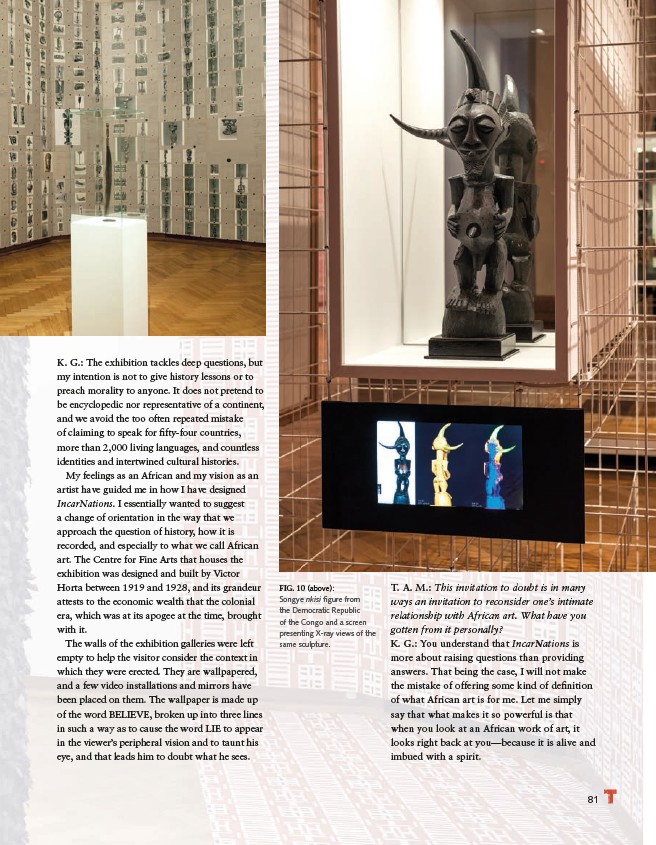
T. A. M.: This invitation to doubt is in many
ways an invitation to reconsider one’s intimate
relationship with African art. What have you
gotten from it personally?
K. G.: You understand that IncarNations is
more about raising questions than providing
answers. That being the case, I will not make
the mistake of offering some kind of defi nition
of what African art is for me. Let me simply
say that what makes it so powerful is that
when you look at an African work of art, it
looks right back at you—because it is alive and
imbued with a spirit.
81
K. G.: The exhibition tackles deep questions, but
my intention is not to give history lessons or to
preach morality to anyone. It does not pretend to
be encyclopedic nor representative of a continent,
and we avoid the too often repeated mistake
of claiming to speak for fi fty-four countries,
more than 2,000 living languages, and countless
identities and intertwined cultural histories.
My feelings as an African and my vision as an
artist have guided me in how I have designed
IncarNations. I essentially wanted to suggest
a change of orientation in the way that we
approach the question of history, how it is
recorded, and especially to what we call African
art. The Centre for Fine Arts that houses the
exhibition was designed and built by Victor
Horta between 1919 and 1928, and its grandeur
attests to the economic wealth that the colonial
era, which was at its apogee at the time, brought
with it.
The walls of the exhibition galleries were left
empty to help the visitor consider the context in
which they were erected. They are wallpapered,
and a few video installations and mirrors have
been placed on them. The wallpaper is made up
of the word BELIEVE, broken up into three lines
in such a way as to cause the word LIE to appear
in the viewer’s peripheral vision and to taunt his
eye, and that leads him to doubt what he sees.
FIG. 10 (above):
Songye nkisi fi gure from
the Democratic Republic
of the Congo and a screen
presenting X-ray views of the
same sculpture.